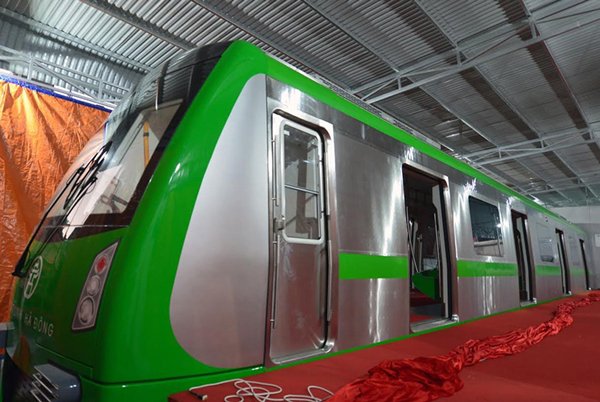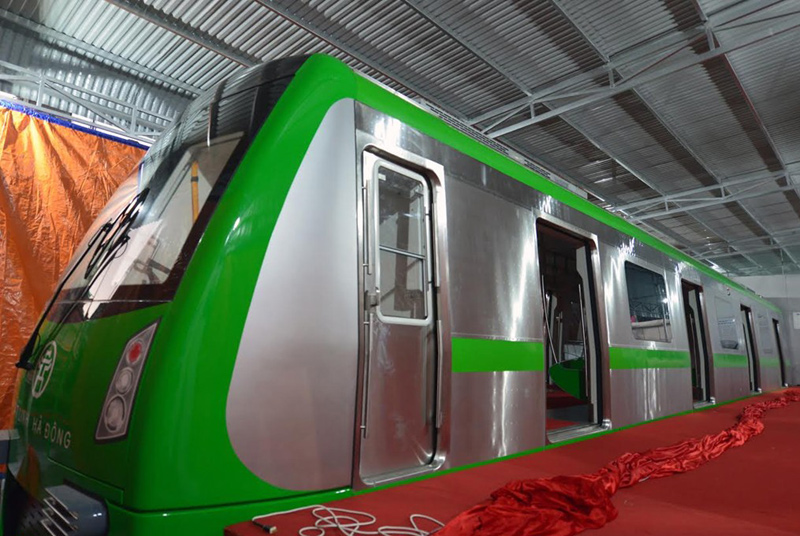BRI-Backed Hanoi Metro Rail Line Set to Open for Passenger Travel
Chinese investment sees Vietnam's first urban railway finally ready to begin commercial operation.

Built by the China Railway Sixth Group Co (CRSG) and forming part of the wider Belt and Road Initiative (BRI), Vietnam's first urban railway – Hanoi's Cat Linh-Ha Dong Elevated Metro Rail Line – is expected to begin commercial operations imminently.
The move follows the successful completion of its initial test runs in August last year, a programme witnessed by local and international stakeholders, as well as representatives of the media. A series of trial passenger runs then followed in October.
The metro link has a total length of about 13km and connects 12 stations across three districts of the Vietnamese capital – Ha Dong, Thanh Xuan and Dong Da. Once fully operational, 13 four-carriage trains will run every two minutes at speeds of between 35 and 80km/h, with the system designed to carry up to 14,000 passengers per hour. The specially-commissioned trains have designated areas for passengers with impaired mobility, seating for the elderly, pregnant women and small children, as well as steel rails to assist standing passengers.
The project was officially launched in 2008, with construction beginning in 2011. In terms of Chinese involvement, in addition to CRSG, the Beijing Mass Transit Railway Operations Corporation also partnered in the development of the scheme. Originally, the project was slated to cost about US$552 million, with Chinese loans covering $419 million of the total. Ultimately, though, costs escalated substantially, with recent estimates putting the final price tag at about $868 million, with the Chinese contribution rising commensurately to $669 million.
It is believed that additional loan negotiations relating to the extra $250 million required to cover the cost overruns delayed the project's completion. Originally, the plan was for the service to commence operation at the end of 2016. In 2017, however, the target date was revised from early 2018 to the end of the same year. By the end of December 2017, however, the final terms of the new loan were agreed and China Eximbank approved the first tranche of the disbursements required to finance the project's completion. Under the new financing agreement, the Vietnamese government will repay the loan over nine years with two payments a year of $14.4 million. This is in addition to the payments outlined under the terms of the original loan agreement.
The new railway forms part of a major initiative by the Vietnamese government aimed at upgrading the country's rail facilities after years of under-investment. Looking at the bigger picture, the Cat Linh-Ha Dong Line – Line 2A – is one of nine lines planned for the nation's capital and forms part of the Hanoi Urban Rail Project, which will involve an estimated spend of $32 billion over the next 30 years. Of that, China has pledged to provide some $11 billion as part of its BRI commitments.
To date, work has only begun on one further route – Line 3. With 12 stations planned along its 12.5km length, the line will connect the city centre-located Hanoi Train Station with suburban Nhon. An 8.5km section of the line will be carried by an overground viaduct, while a further 4km will run underground. Funding has come primarily from France, with the European Investment Bank and the Asian Development Bank also contributing. Construction began in 2014 and the project is scheduled to be completed by 2021.
Beyond the capital, a number of other major rail projects have also been green-lit. Foremost among these are Ho Chi Minh City's metro rail system and a $33 billion link connecting Hanoi and Ho Chi Minh City via a high-speed passenger and freight service. This will replace the single-track, north-south line, which dates back to the beginning of French colonial rule at the end of the 19th century.
To help deliver the massive financing required for these ambitious projects, the Vietnamese government enacted The Law on Railways 2017, which introduced unique preferential mechanisms designed to secure investment in the form of public-private partnership arrangements. Among the incentives on offer are import duty holidays, corporate income tax breaks and concessionary rated land use and loans.
Marilyn Balcita, Special Correspondent, Hanoi





